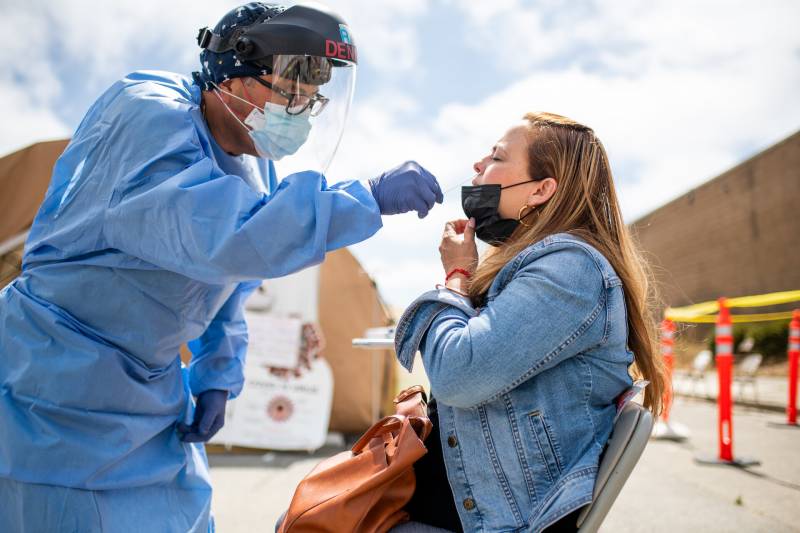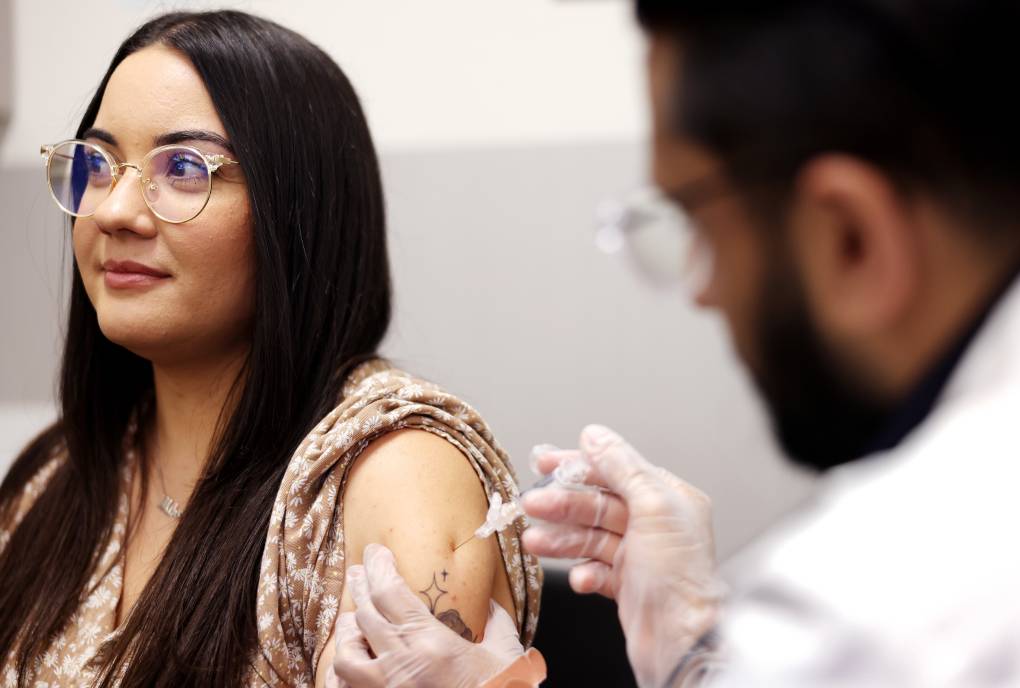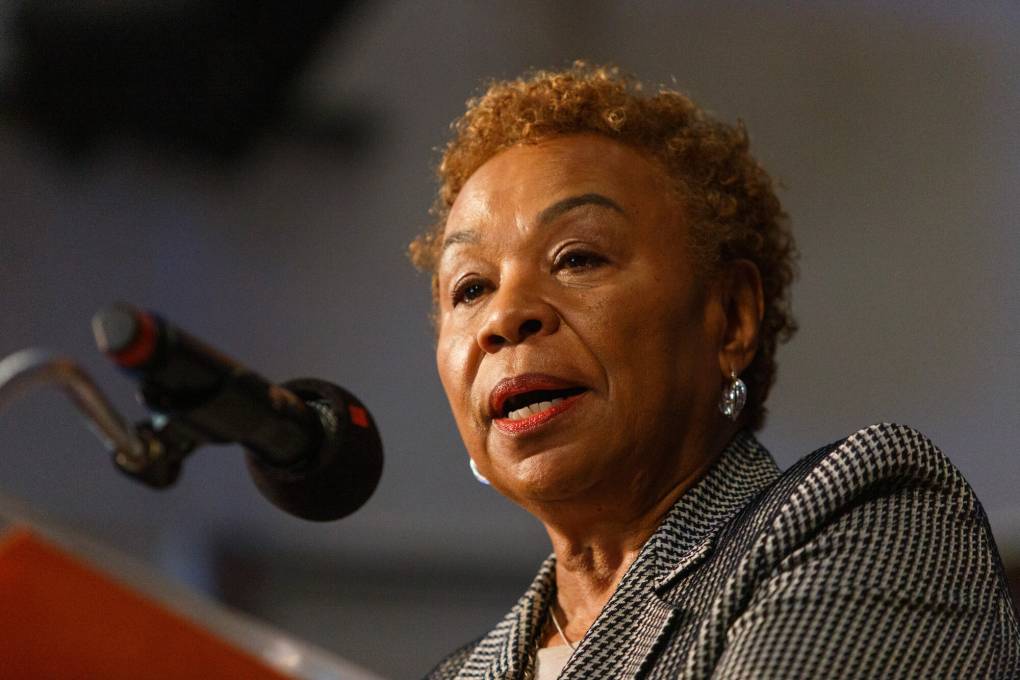It’s déjà vu all over again (and again and again).
Public health officials in nearly every Bay Area county — and some neighboring ones — urged residents on Friday to once again mask up in public indoor spaces and take other COVID-19 precautions, as cases and hospitalizations rise across the region.
In a rare joint statement, officials in Alameda, Contra Costa, Marin, Monterey, Napa, San Francisco, San Mateo, Santa Clara, Sonoma, Santa Cruz and San Benito counties said the Bay Area is now home to California’s highest infection rates, an unwelcome uptick fueled by the highly contagious omicron subvariants.
“We’re seeing an increase in cases, and that’s true throughout the region,” Dr. Susan Philip, San Francisco’s health officer, told KQED in an interview Friday. “We’re on the upswing right now. And to me, that’s the trend that we should be thinking about and then making our decisions based on.”
Since early April, case rates in almost every county in the region have ticked up faster than the statewide average, officials said, noting that the number of positive cases are likely higher than reported given the prevalence of at-home tests. And COVID-related hospitalizations in the area, while still relatively low, are also rising at a more rapid clip than elsewhere in the state.



